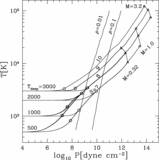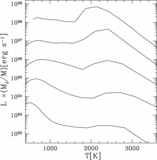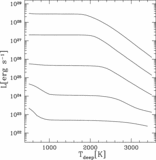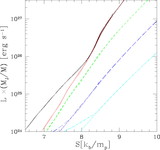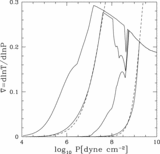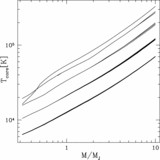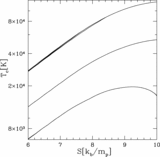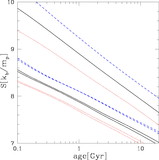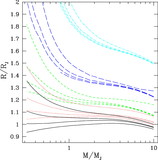Image Details
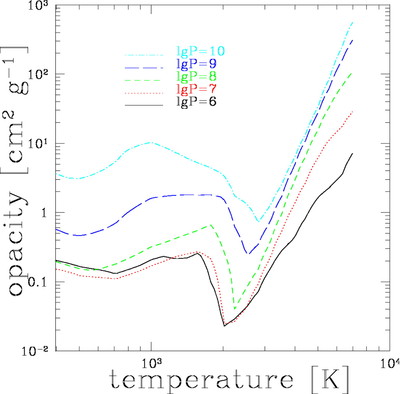
Caption: Fig. 1.
Rosseland opacity vs. temperature for different pressures. We use the Allard et al. (2001) opacities, which include the effect of grains in the EOS but ignore their opacity, as is appropriate if the grains have condensed out. The steep rise above 2000 K is primarily due to H−. At low pressures, the rise in opacity just below the minimum at 2000 K is mainly from H2O. At high pressures, collision‐induced absorption on H2 dominates, leading to a steep increase with pressure.
Copyright and Terms & Conditions
© 2006. The American Astronomical Society. All rights reserved. Printed in U.S.A.


